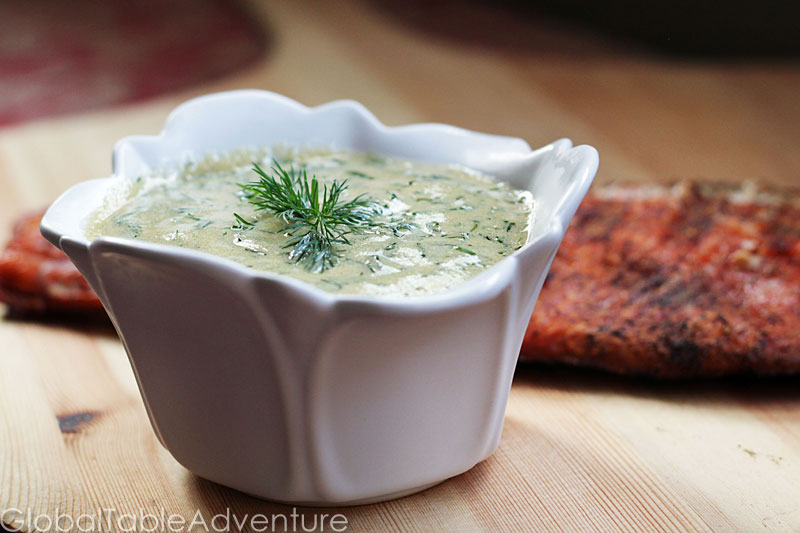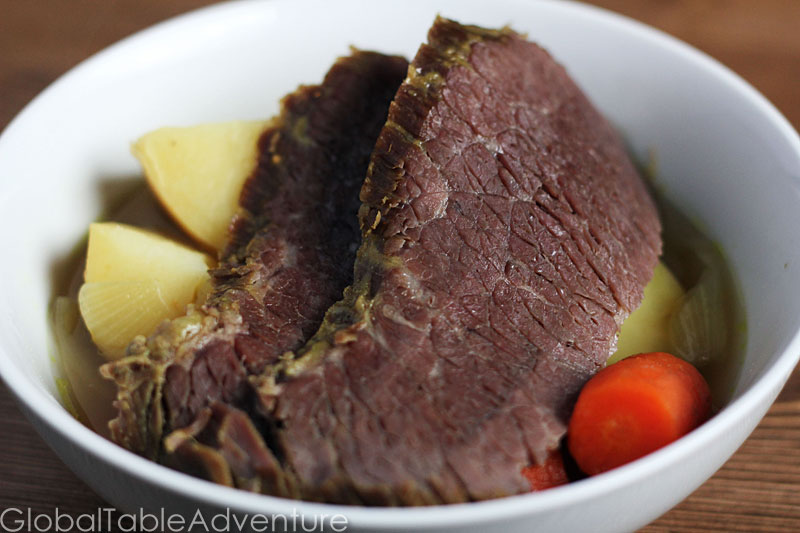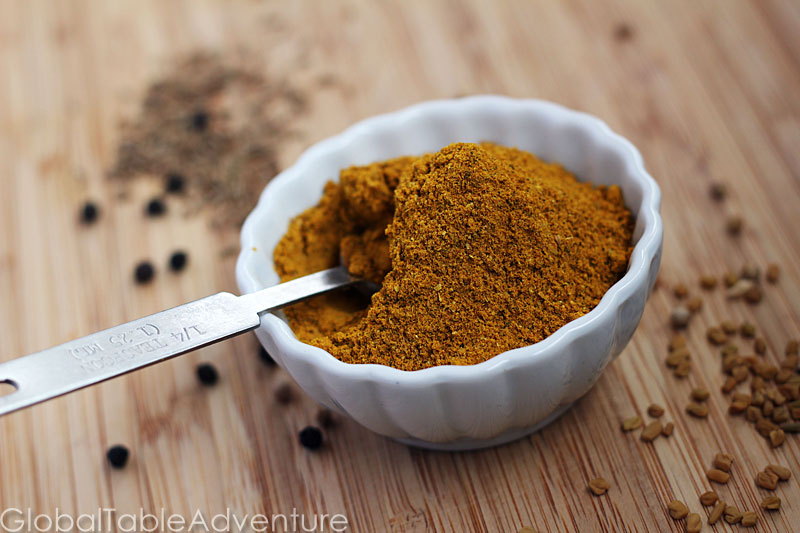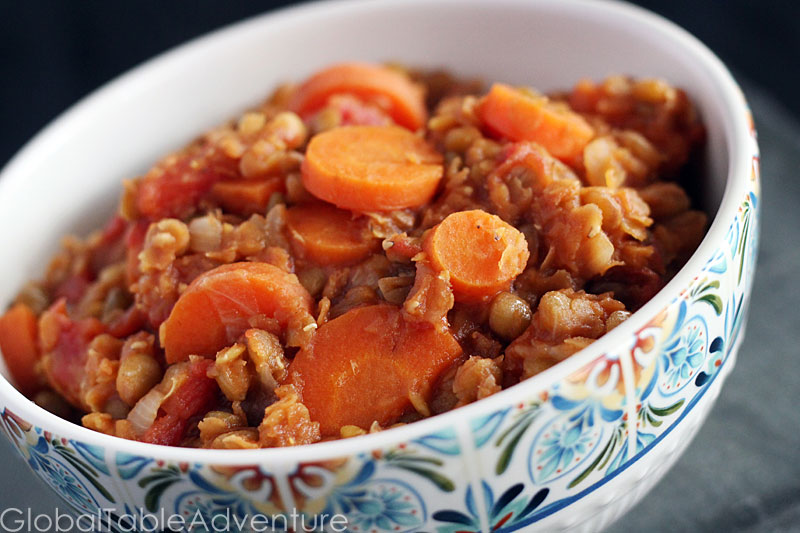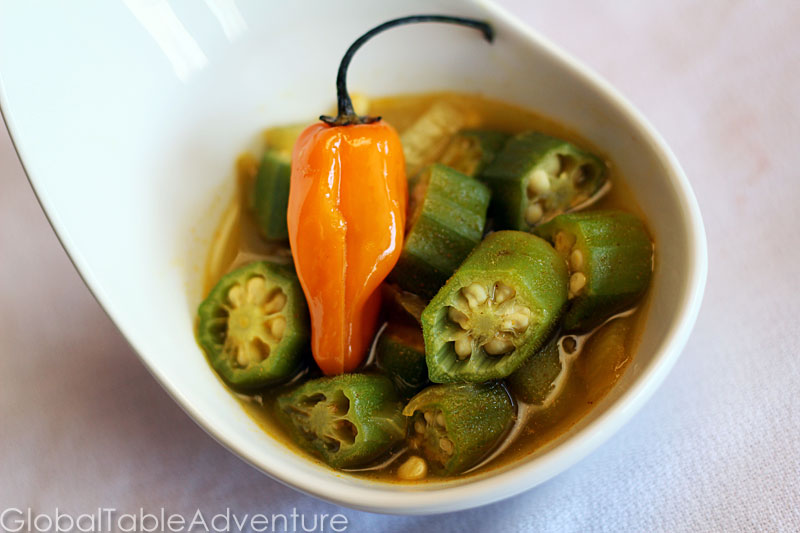Serves 2-4 You could glaze a hub cap and I’d eat it. The key is to make the glazed item tantalizingly sweet – leave a little mystery. I’m not into savory foods swimming in syrup. This Finnish recipe shows lovely restraint, striking a delicate balance. In fact, shortly after I took my first bite I decided to make this recipe as often as possible for the rest of my life. Rutabagas come from around northern Central Europe. Maple syrup and butter give the root the most addictive flavor and it makes a great side dish for salmon or roast chicken. A total eye opener. The technique would be lovely with any carb – carrots, potatoes, butternut squash – or even a hearty blend of them all. Ingredients: 2 lbs rutabaga (about 3 average rutabagas), peeled and cubed 4 Tbsp butter (1/2 stick) 1/8 cup maple syrup salt pepper Method: Dearest readers, meet the mighty rutabaga. Often passed up in the supermarket. Rarely grown at home. A gnarly thing of beauty. You’ll need to peel it and …
Read More
Makes about 1 1/2 cups Mustard-lovers unite. This tangy, spicy Scandinavian recipe goes great with meaty salmon. Take the time to buy really excellent mustard – the spicier the better. If you have leftovers try spreading a little on a sandwich. That’s what I did! Ingredients: 3/4 cup (7 oz) spicy dijon mustard 1 1/2 ounces fresh dill, stems removed and chopped (about 1 cup) 1/8 cup vinegar 1 tsp salt 1 1/2 tsp sugar 3/4 cup oil Method: First things first. Start a small herb garden and grow a mound of dill. You’ll be glad you did because this recipe calls for a lot. About 2 of those insanely expensive plastic containers the supermarkets carry. Once you have your dill, take the stems off. The chop it up nice and fine. Measure out the spiciest-mustard-you-can-find into a small bowl. I used a true Dijon, but take a gander in local specialty shops. I’m sure you’ll find something just as lovely. Add the vinegar. Mr Picky and I are so different. At this point he pinched …
Read More
Serves 4 People all over Polynesia eat this rich, sweet dessert. It’s uber simple to throw together – just take care to not overcook the bananas, lest they become mushy. Mushy is a big time banana fail. I never met anyone who loved mushy bananas. Do you? TIP: This amount of coconut milk can easily cook more bananas – perhaps up to 8 small red bananas. I only needed 4 for our small family though. Ingredients: 4 small red bananas or 2 regular bananas 1/4 tsp salt (or just a pinch) 1/3 cup sugar 1 (13.5 oz) can of coconut milk Method: Are you a coconut fanatic? Good. Get ready! In a saucepan big enough for your bananas, add coconut milk, sugar,… … and a little salt. Bring this lovely mixture to a simmer and stir to dissolve sugar. Add the bananas (you can use whole bananas or slice them in bite-sized pieces). Simmer gently for 2-4 minutes (do not overcook or the bananas will become mushy). You really just want to warm them through. …
Read More
Serves 6-8 I’ll be honest – I’ve spent the better part of my life avoiding corned beef. It seemed messy, unwieldy, and way too, well,… meaty. Global Table has a way of taking me out of my comfort zone, though. Turns out this one pot dish is super easy and wickedly tasty. Today we’re making a Fijian version. Their special twist is a hearty helping of curry powder. If you’d like to make it even more Fijian, try swapping the potatoes with taro root and/or chunks of yucca. Also, Fijians would typically make this dish with canned corned beef – but I wanted to go the extra mile for Saint Patrick’s Day! Thanks Fiji. Ingredients: 4 lb piece of corned beef 1-2 Tbsp Homemade Curry Powder water, to cover 2 onions, cut in large chunks 2 large carrots, cut into 1.5 inch pieces 6 medium potatoes (yukon gold), quartered Method: Get a pot large enough to hold your meat (and, eventually, all your veggies). If I had a big cast iron pot, that’s what I …
Read More
Makes about 1/4 cup Curry powder isn’t just for India anymore. Fijians, all the way in Polynesia, also love the golden goodness. I took a look at Mark Bittman’s curry recipes (he has three different ones in The Best Recipes in the World), and made a version which combines the best of his fragrant curry and mild curry. The result? An all-purpose curry that will taste great on almost anything. Except maybe ice cream. This version ended up quite a bit different than Bittman’s, most notably because of a little extra cardamom and a bit less fennel seed. I’m just not that into fennel. If you’d like more heat, try mixing in extra cayenne until you get a blend you like. If you want bonus points, toast and grind each spice individually – you’ll be able to toast the spices more evenly and you’ll also have better control of the grind. You know… unless you have a little Miss Ava to keep up with. Ingredients: 2 tsp black peppercorns 2 tsp ground turmeric 2 tsp coriander seeds …
Read More
Makes 4 quarts Stovetop popcorn is a must have if you’re looking to replicate an Ethiopian coffee ceremony. Sure, you could pop a bag in the microwave in less than three minutes, but… well… sometimes it’s more fun realizing how much you can do without special gadgets and gizmos. As far as who had more fun with this – me, Mr. Picky, or Miss Ava – it might have been me. I spent most of the time squealing while I waited for the first few to explode… I mean… pop. Also? I ate the most. Ingredients: 3 Tbsp vegetable oil 1/2 cup popcorn kernels salt Method: Popcorn needs to be made in a large pot, so there’s room for all the kernels to pop into white, fluffy snack goodness. It’s a lot like the heart – the bigger our hearts, the more room for all of 0ur emotions to … well… pop into white, fluffy bursts of life. With an open heart we experience so much more. Never let your heart run out of room. …
Read More

Coffee is said to have originated in Ethiopia. Today Ethiopian coffee ceremonies are common after large meals, even at restaurants. Women will roast beans in front of the guests. Then she’ll grind the beans, perfuming the room, and brew them in a clay coffee pot, or jebena. The coffee is served in small cups called si’ni. Diners have their choice of salt or sugar. Traditionally, every guest is offered 3 cupfuls- the same grounds being brewed each time, making each consecutive cup weaker. My Rendition At best, I was ill-prepared to perform an Ethiopian coffee ceremony. #1, I live in Tulsa, Oklahoma. #2, I lack every single piece of traditional Ethiopian coffee-making equipment there could possibly be. In fact, the only proper element I have is a bag of green coffee beans. Tilda’s parents brought them all the way over from Ethiopia, known as the birthplace of coffee. At least the coffee was right. I got to work, putting my college nickname “MacGyver” to good use. What follows are the results of a free-spirited, improvisational coffee …
Read More
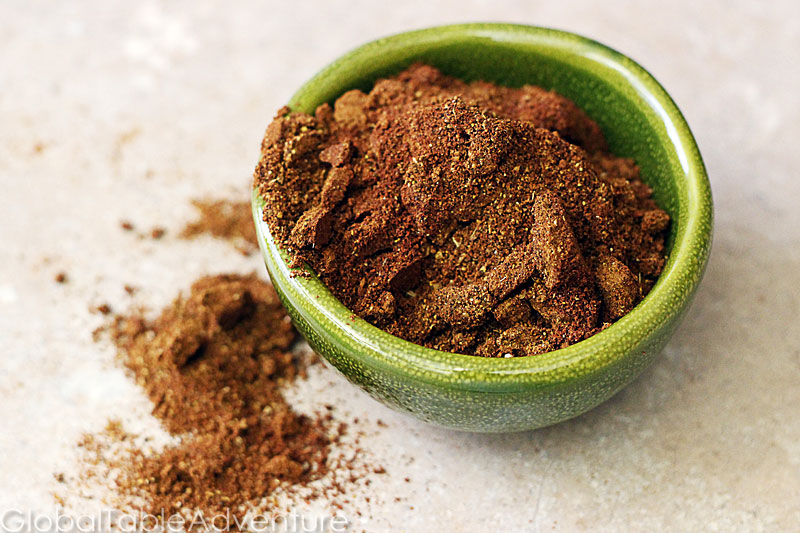
Berberé is a spicy and savory spice mixture used all over Eritrea and Ethiopia. This blend goes well with chicken, beef, or lamb, and would also be great with lentils and other legumes. I’ve used it with our Doro Wat (chicken stew) and Awaze Tibs (lamb stew) recipes. A few sprinkles would also be great in our Lentil Wat. Makes about 1/4 cup Ingredients: 3 cloves 1/2 tsp coriander seeds 1/2 tsp fenugreek seeds 1 tsp cumin 1 Tbsp paprika 1/4 tsp peppercorns 1/4 tsp ground ginger 1/4 tsp ground cinnamon 1/4 tsp ground turmeric 5 whole allspice balls 1/4 tsp cardamom seeds (removed from pods) 1/8 cup chili powder Method: Heat the spices in a clean, dry skillet to toast them. Once cool, grind them in batches. Keep going until most of the stragglers get ground up! Hey, that’s my sister! Enjoy. Berberé |Hot East African Spice blend Votes: 0 Rating: 0 You: Rate this recipe! Print Recipe Berberé is a spicy and savory spice mixture used all over Eritrea and Ethiopia. This blend goes well with …
Read More
Serves 4 Let’s thank Eritrea for this giant, vegan bowl of deliciousness – a happy mixture of spicy lentils, offset by sweet carrots and tomatoes. The heat comes from berberé, the regional spice blend that should be added with a heavy hand. You know, for authenticity purposes. And lots of sweating. Edited to add: One of our readers posted a great tip in the comments section of our Ethiopian menu which also applies to Eritrean cooking: When I watch Ethiopian cooks in Ethiopia they chop up red onion very tiny (I use a food processor and stop short of pulverizing as it helps it cook down faster) and then dry cook it in the pan — no oil. They dry cook it stirring constantly until it turns almost into a paste — imagine the consistency of a good roux. It takes a lot of onion to get the right amount of this paste. Then add the oil/lentils, sauce stuff, etc. The onion paste is actually the thickener for the wat — if you don’t do …
Read More
Serves 4-6 Okra amazes me. Fried, it behaves nicely. Crispy, yummy, good. When stewed okra becomes a little more… shall we say… unwieldy? Slippery? Viscous? No matter. In Equatorial Guinea they make the best of it and turn this tricky veggie into spicy and exotic side dish with a few simple spices (and one explosive habanero pepper). I avoided fire-engine heat levels by simply splitting the habanero to let a little juice out. It was more than enough heat for me. While the okra becomes characteristically gooey, the flavor is amazing – and supposedly, one of the forerunners to southern gumbo. Ingredients: 1 tsp red palm oil 1 onion, chopped 1 habenero pepper, slit 1 tsp curry 1/4 tsp chili powder 1 lb sliced okra water, to cover Method: If you can get fresh okra, fantastic. If not, thaw a bag of okra. Meanwhile, take a stroll. Wave at your neighbors and smile so big they’ll wonder what’s up your sleeve. When you get home, heat up the red palm oil in a medium pot. Add the …
Read More
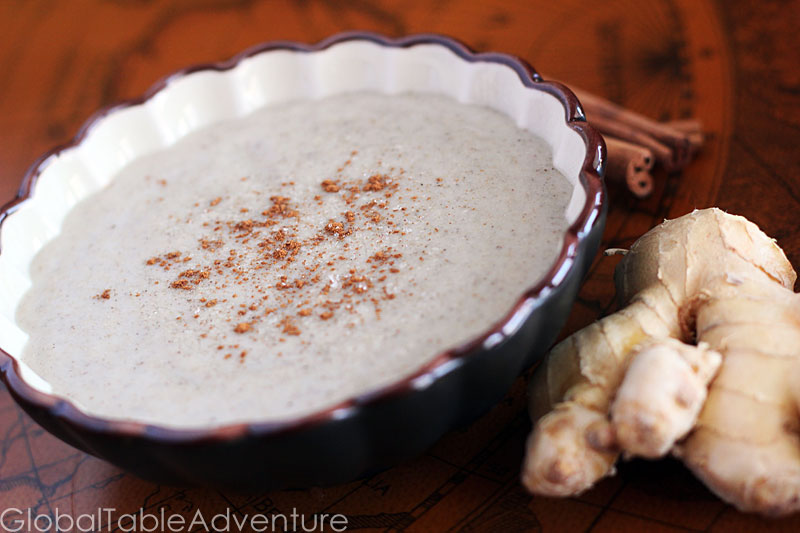
Serves 2-4 What is breakfast like at your house? Does one person eat more sugar than oatmeal? More syrup than pancake? That’s Mr. Picky. One day I fully expect him to eat a bowl of nothing but sugar. Meanwhile I just barely dust my breakfast with sweeteners. While eating, we take turns shaking our heads at each other’s crazy eating habits. Today, take your sugar out for a spin on a bowl of millet porridge, an African treat. Particularly popular in central Africa, you can make this dish as sweet as you like (although the characteristic whole grain/bitter flavor will remain strong in millet) – or you can leave it unsweetened for a more savory dish. Ingredients: 1 cup millet flour (available at African markets or some health food stores) 1/2 tsp grated ginger 1/8 cup sugar, plus extra as needed 1 cup water 1 1/2 -2 cups whole milk cinnamon for garnish, to taste Method: Good morning sleepyhead! Rub the fog from your eyes. Grating a little fresh ginger will help awaken the senses. This …
Read More

Serves 2 You’ve seen them at the fish market. Whole trout. Somewhat intimidating, but also intriguing. Friends, if you’ve never ventured in the world of whole fish, I highly recommend it. Cooking them is beyond easy and the flavor is exceptional. Today we stuff them with peppers, onions, and fresh lemons – flavors characteristic of Equatorial Guinea. Slightly spicy and super fresh – make this for a special occasion or just for fun. Ingredients: 2 whole trout, cleaned 1/4 cup thinly sliced poblano 1/4 cup thinly sliced onion 4 lemon slices salt pepper Method: First things first. Light a candle. The flickering light is warm and inviting, and does a great job of eating up fish smells. I burn candles daily, fish or no fish. Gather your ingredients and preheat the grill to medium. You won’t need too much onion and pepper, unless your fish are huge. Rinse and pat dry the fish. Then season the cavity with salt and pepper – preferably fresh, coarse sea salt. Add thinly sliced onions and poblanos… for a little …
Read More


